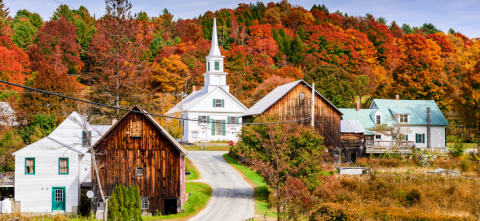VPR and Vermont PBS have released the results of the annual Vermont Rural Life Survey, which polls households from all across Vermont about life in their communities and the daily challenges they face. Vermont has the second highest percentage of its population living in rural areas in the United States. The survey revealed challenges in affording decent quality housing, as well as concerns about the future of Vermont’s rural towns and cities.

20% of respondents reported that they or a family member had had some trouble paying for their rent or house payment. This number was much higher in Chittenden County (26%) than in more rural areas of the state like Central Vermont (12%) and the Northeast Kingdom (14%). This is unsurprising, given that Chittenden County has higher home sale and rent prices than more rural parts of the state.
However, the survey also asked whether respondents could pay for an unexpected $1,000 expense. 40% reported that they would have a problem paying the full amount right away. That number was actually highest in the Northeast Kingdom and Southern Vermont, where 50% and 47% of households would struggle with an unexpected expense.
The survey data shows that even in areas where it is more affordable to rent or buy a home, many households may still find it difficult to afford all of the expenses that come with a home, such a security deposit, high utility bill or an emergency home repair. The housing stock in more rural areas of the state tends to be older than in more urban areas. Older homes are more likely to face serious housing quality issues like inadequate heating or plumbing systems, which can be very expensive to maintain or replace.
Furthermore, Vermonters reported concern over the future of their communities. 49% said they would advise young people to leave Vermont in order to build a successful life and career. Many of Vermont’s towns and cities are attempting to attract residents and businesses by building denser, more walkable areas in existing downtowns and village centers. However, reversing long-standing demographic trends will require sustained investments in both high quality, affordable housing and job opportunities.
Despite these concerns, the survey also showed many signs for optimism for rural Vermont. 78% of respondents rated the overall quality of life in their communities as “Excellent” or “Good”, and 53% of respondents volunteered for a local charitable cause within the last year, suggesting strong community ties and a sense of belonging.
